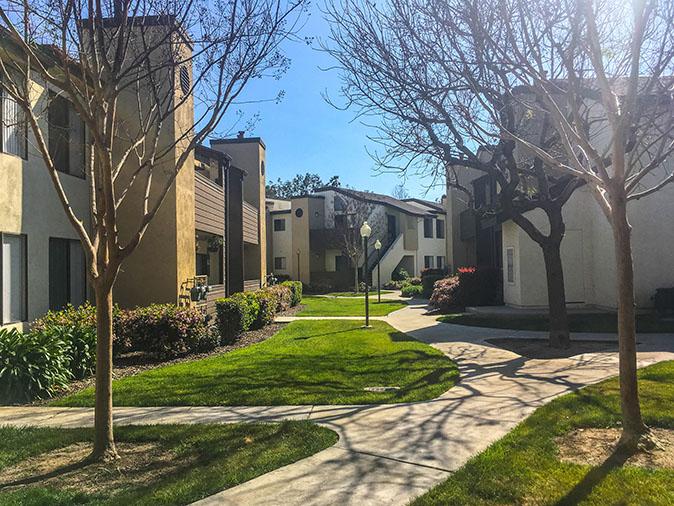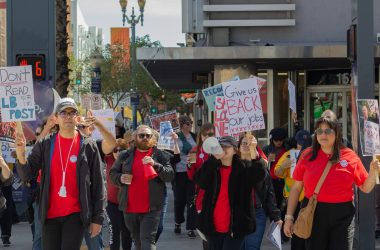Neighborhoods that once housed artists, Cambodian refugees and other communities that make Long Beach the second most diverse city in America are undergoing renovation that some say are taking the international out of the “International City.”
“You’re turning the entire area into a bastion of the wealthy,” Housing Long Beach director Josh Butler said. Housing Long Beach is an renter’s advocacy group that works with city legislation and community members. “Right now in Long Beach we are seeing people forced out through the development of high-rise luxury housing.”
Mayor Robert Garcia recently said in his State of the City address that Long Beach will be a “construction zone” in 2017, with plenty of new residential high rises and retail developments planned to start across the city. In February, Long Beach City Council approved a proposal from development firm Preface to build 40 single-family homes that are expected to be listed somewhere between $700,000 and $900,000 in East Long Beach.
This decision, along with the surge in luxury projects like The Current and Parc Broadway, two luxury developments located downtown, and northern Long Beach’s Riverwalk, indicate that the mayor is serious about his promise to bring development to all areas of the city. Still, as the number of luxury developments increase, so do property values and rents; often forcing renters to find a home elsewhere.
Residents expect the newly approved Preface project to follow the trend of other recent construction in Long Beach, where renters in adjacent areas to new developments saw increases by as much as 7 percent in their rent, according to the Press Telegram and ApartmentList.com
“I have no idea what to do, my guy! I’ve lived here three years, but they have the ability to kick me out in three months,” said Tyler Coyn, a local student who was recently evicted. “Rent has been so high that I literally got no way to save. Yet, they expect me to have the money to put a deposit down on a new spankin’ place.”
Coyn is not alone in his situation, nor is his the most extreme. Others in the city share his sentiment of hopelessness when it comes to finding affordable living, so much so that the mayor commissioned an Affordable and Workforce Housing Study Group to seek solutions to the shortage of affordable housing in the city. The study group set up community meetings and workshops where residents could voice their concerns and suggestions.
Elizabeth Waite, a student at Cal State Long Beach who spoke at one of the meetings, said students now focus more on how to afford living rather than how to succeed in school.
“For a lot of us, we can’t even enter the renter market because it is so competitive,” Waite said. “And even if we did enter the renter market, there’s nothing legally protecting us from being evicted for some erroneous or unjustified reason.”
Whether it be students, veterans or artists, communities in Long Beach are feeling the housing crunch that Mayor Garcia described in his opening remarks at the session.
Director of Development Services Amy Bodek outlined just how serious the affordable housing problem is for tenants in the city. She said in her presentation that, over the past four years in Long Beach, rent for the average one-bedroom apartment has risen almost 26 percent; going from $995 in 2012 to as much as $1,400 at the end of 2016.
“I think that’s what we’re at the greatest risk of losing, right now, is our diversity as a city,” said Butler, who is also a member of the study group. “Our low-income communities of color are at risk of displacement, and we’re seeing them displaced.”
Some view the construction happening across the city as a leading cause of the increases in rent; however, Butler and the study group are hopeful that construction will be a solution to lowering rent around Long Beach.
“Inclusionary housing would require all market housing, when being built, to make 15 percent of those units affordable,” Butler said. “So for all of those things being built in the downtown area, 15 percent of those units could have been made affordable.”
Although the percentage of units set aside varies on the municipality, most jurisdictions with inclusionary policies in place require the homes to remain affordable for the long term; 30 to 50 years is not uncommon, and some jurisdictions mandate the units stay affordable permanently. Housing advocates like Butler would love to see Long Beach reap the benefits of inclusive policies similar to other cities in Southern California such as Pasadena and Los Angeles.
“Many cities have it and it’s a tool, a good tool, and in the cities that have used it, it worked,” he said. “It helps maintain affordability, and has maintained stability in low-income neighborhoods”
Housing advocates are not the only ones with a stake in making housing affordable. Developers are often seen as antagonist to inclusionary policies, and affordable housing in general.
“Everything I say gets met with skepticism, because I’m the big developer. I’m the evil guy,” said Yanki Greenspan, a multifamily housing developer in California and Nevada. “Developers only build property where they feel they can make money, and if they can’t make money because they have to keep prices affordable then they’re not going to build. It’s as simple as that. A basic rule of economics.”
Contrary to advocates’ position on the policies, Greenspan, who is President of the Westland Real Estate Group, believes inclusionary policies could be detrimental to the recent boom of development happening in the city.
“A developer that is building a downtown lot and a really nice high-rise is going to have a challenge with the city telling them they have to take away a section for affordable housing,” he said.
Allison King, Deputy Executive Director of the Long Beach Housing Authority, said the city needs to be creative in finding solutions to bridge the divide between affordable housing and developments.
“There is going to have to be ways in which we incentivize owners to see themselves as part of the solution,” she said. “I have the ability to work with the developer and as part of their financial package we can create a contract that will give them a certain number of units so that tenants who are assisted by this program will be a constant source of occupancy for them.”
Over the past 10 years, Long Beach has built 1,800 and preserved 2,000 affordable housing units, according to the city’s presentation this year. Mayor Garcia has promised to do better and build more affordable housing for the communities of the “International City.”
“I think that we need to be looking to help those that have been displaced from their upgrading neighborhoods, and I think part of what the mayor is trying to do with his roundtable is to facilitate that conversation,” Butler said. “So I do think that a permanent source of funding for affordable housing is on the horizon. I think it’s going to be hard fought, but it’s on the horizon.”




